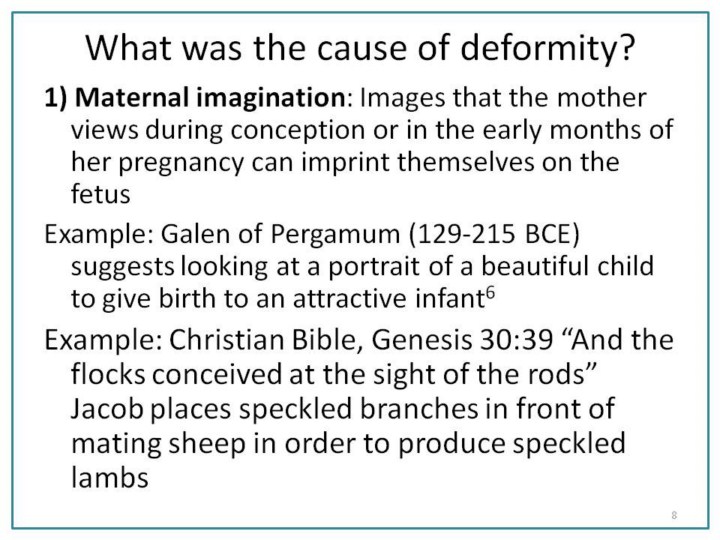| front |1 |2 |3 |4 |5 |6 |7 |8 |9 |10 |11 |12 |13 |14 |15 |16 |17 |18 |19 |20 |21 |22 |23 |24 |25 |26 |27 |28 |29 |30 |31 |32 |33 |34 |35 |36 |37 |38 |39 |40 |41 |42 |43 |44 |45 |46 |review |
 |
Ancient references to abnormal births remain today. They are mentioned in the Old Testaments books of Genesis (30:39) and Numbers (5:19), and Aristotle theorized on the cause of children who do not appear like their parents. These authors were generally concerned with the source of the deformity and viewed the infant as a consequence of improper behavior. Maternal imagination was a popular theory in the ancient world, so much so that Galen suggested its use for producing beautiful children. It was believed that the sights witnessed by a pregnant woman could be transmitted to her fetus. This could have beneficial or harmful consequences. Women were told to gaze on statues or paintings during conception to create a charming infant. However, maternal imagination could also cause a child to resemble an animal, a disabled beggar, or the face of an adulterer. |